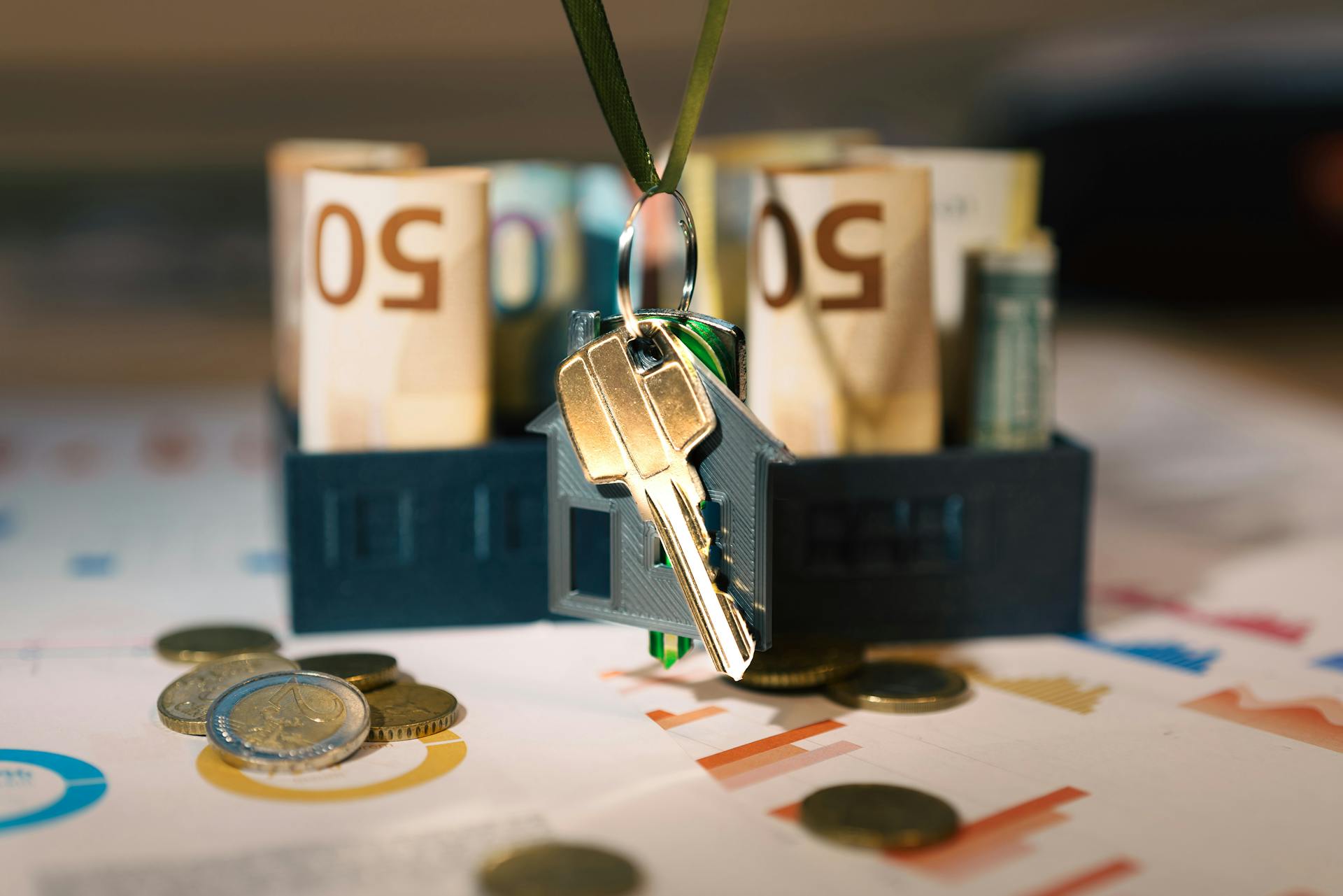
A rate buydown is essentially a temporary reduction in the interest rate on a mortgage loan. This is usually achieved by paying a lump sum upfront, which can be provided by the seller or the buyer themselves.
The cost of a rate buydown can vary greatly depending on the loan amount, interest rate, and other factors. For example, a study showed that a 1% rate buydown on a $200,000 loan can save the buyer around $1,000 per year in interest payments.
The rate buydown cost is typically a one-time payment, usually made at closing. This payment is used to reduce the interest rate on the loan, resulting in lower monthly mortgage payments. In some cases, the rate buydown cost can be financed into the loan itself, adding to the overall loan amount.
The benefits of a rate buydown are clear: lower monthly payments, reduced financial burden, and increased affordability. By paying a lump sum upfront, buyers can enjoy these benefits without taking on additional debt.
Take a look at this: Maximum Housing Loan
Benefits and Advantages
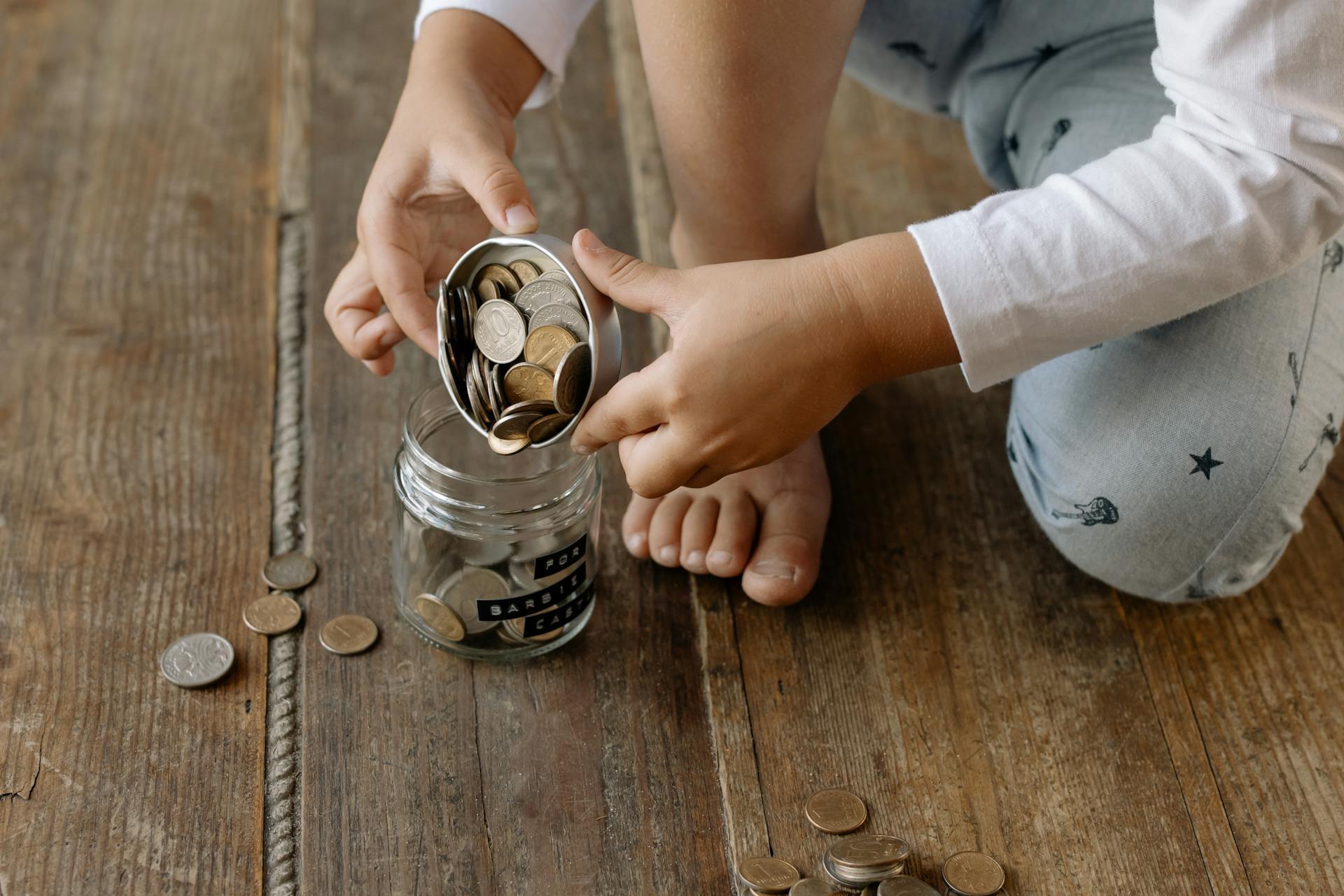
A rate buydown can provide significant benefits and advantages to homebuyers.
Lower monthly payments are a major advantage, making homeownership more affordable initially and over the long term.
By paying a lump sum upfront, buyers can secure a lower interest rate for the initial years of the mortgage, reducing the payment shock of higher interest rates.
Temporary interest rate buydowns can provide temporary relief, while permanent buydowns can offer long-term financial benefits.
Lower monthly payments can enhance a buyer's ability to qualify for a mortgage and to afford a more expensive home, particularly beneficial for first-time homebuyers or those with tight budgets.
Predictable and lower monthly payments make it easier for buyers to budget and manage their finances, providing stability and peace of mind.
Here are some of the key benefits of a rate buydown:
- Lower payments
- Improved affordability
- Financial relief
- Easier budgeting
- Potential long-term savings
If the seller is motivated, they may be willing to pick up the fees involved with a permanent or temporary buydown, providing another reason to consider a rate buydown.
Cost Estimates

The cost of a rate buydown can be a significant upfront expense, but it's essential to understand how it works and what you can expect to pay. The cost of a rate buydown is typically paid by the seller, and it increases with the length of the buydown and the discounted rate.
A 3-2-1 buydown, for example, is the most expensive, while a 1-0 buydown is the least expensive. This means that if you're considering a 3-2-1 buydown, you can expect to pay more than if you were to opt for a 1-0 buydown.
The total cost of a 3-2-1 buydown can be substantial, as seen in the example where a $400,000 purchase price with a 20% down payment resulted in a total buydown cost of $14,761, which equates to 4.625% of the sales price.
The cost of a mortgage buydown is also based on the amount of money you're saving each month on interest payments. For instance, a 1-1 buy-down that saves you $100 a month in interest payments for two years might cost the seller $2,400.
Worth a look: 3 Mortgage Loans
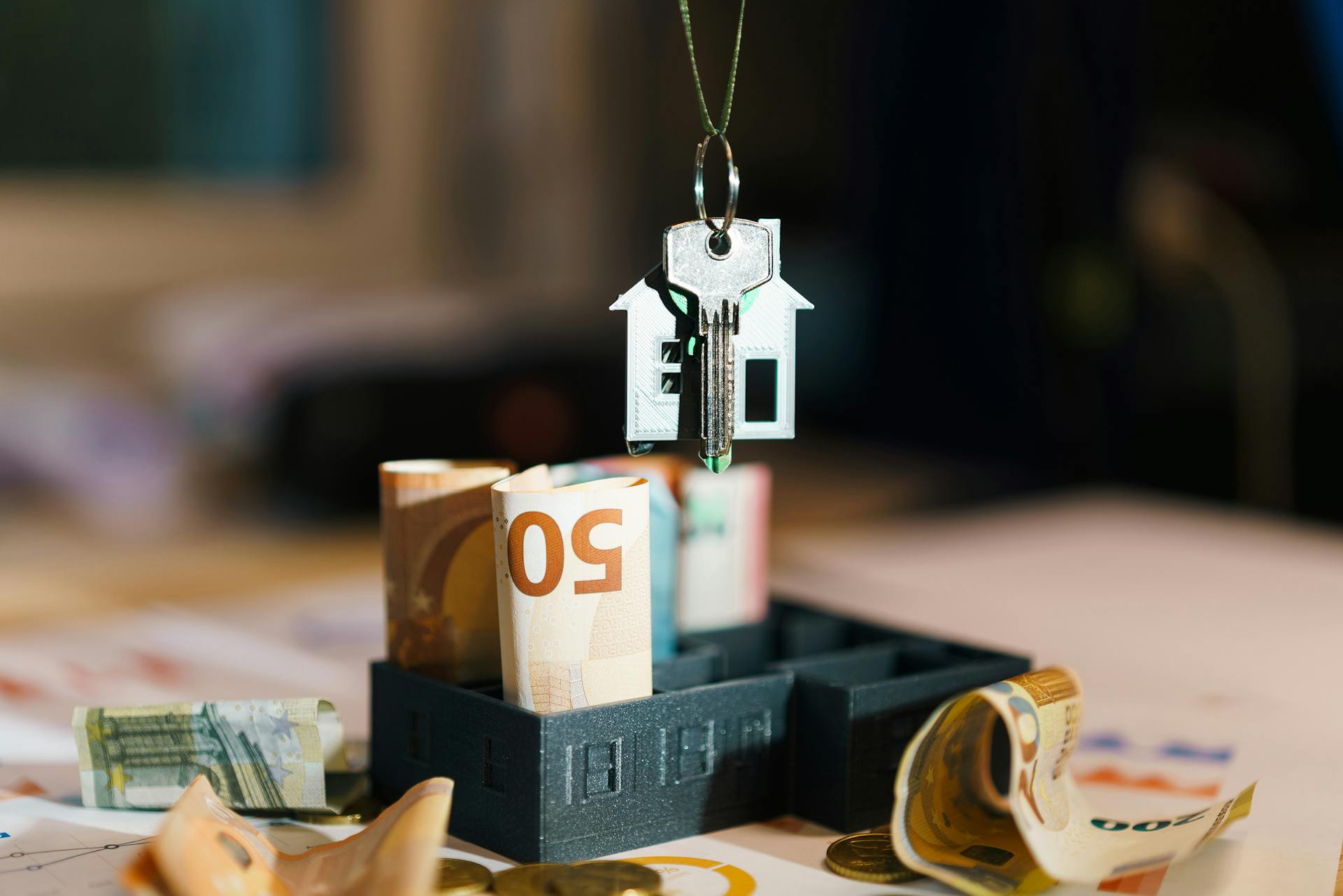
To give you a better idea of the costs involved, here's a breakdown of the estimated costs for different types of buydowns:
Keep in mind that these are just estimates, and the actual cost of a rate buydown may vary depending on your specific situation and the terms of your loan.
Types of Rate Buydowns
Types of rate buydowns can vary in duration and interest rate reductions. The most common types of mortgage buy-downs include 3-2-1, 2-1, and 1-1 buy-downs.
A 3-2-1 mortgage buy-down lasts for three years, with a 3% reduction in interest rate the first year, 2% the second year, and 1% the third year. This can significantly reduce monthly payments during the first years of a mortgage.
2-1 mortgage buy-downs are similar, lasting for two years with a 2% reduction in interest rate the first year and 1% the second year. In contrast, 1-1 buy-downs reduce the borrower's interest rate by 1% for the first two years of the loan.
Here are the specifics on each type of buy-down:
How Buy-downs Work
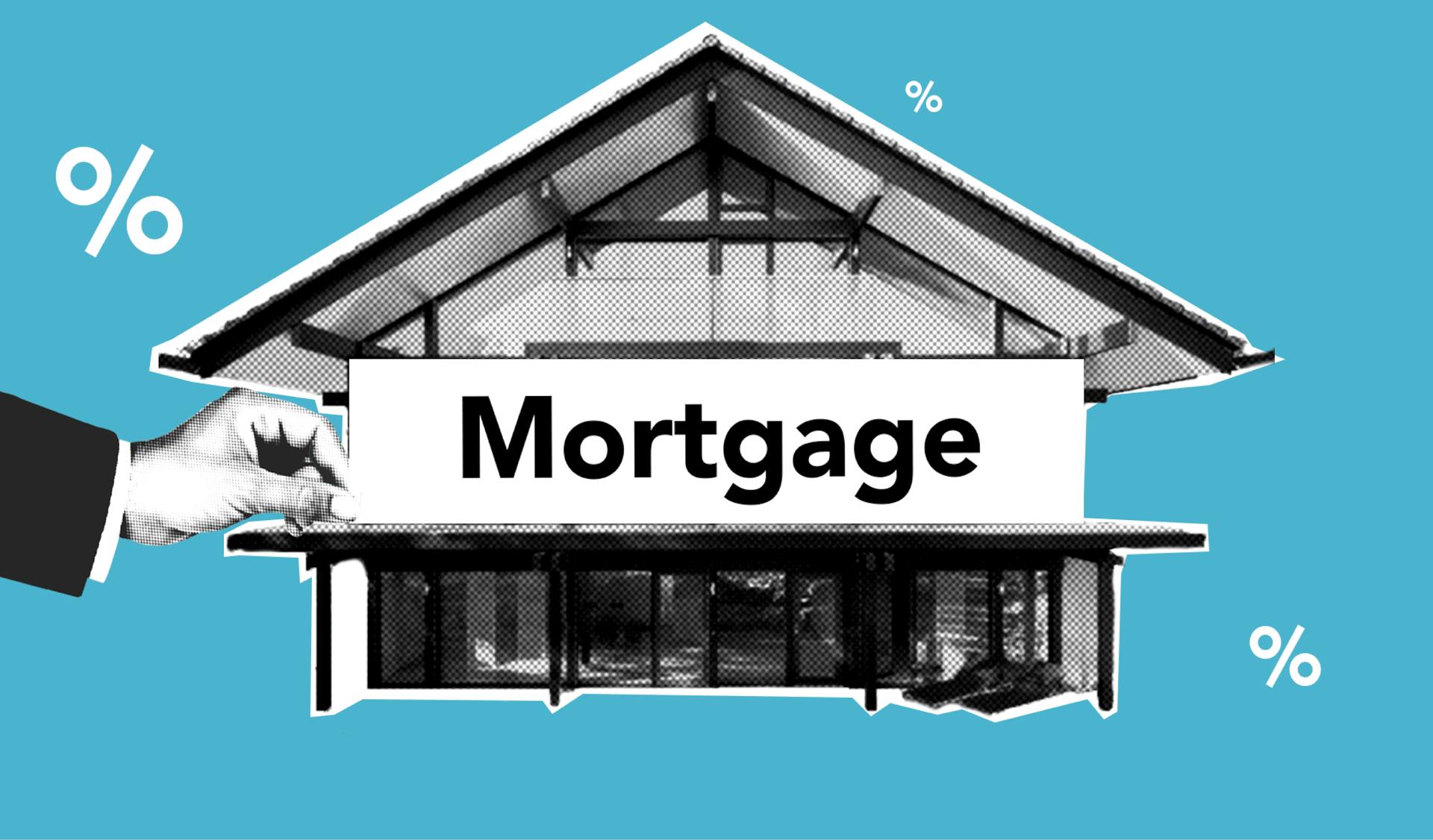
Buy-downs are a way to temporarily reduce your interest rate when you purchase a home. A temporary interest rate buy-down is a way to temporarily reduce your interest rate when you purchase a home, and it's often paid for by the seller as part of the sales agreement.
To qualify for a buy-down, you need to be approved for the mortgage at the full interest rate. This means you would need to be approved for a loan with the original interest rate, which is then reduced during the buy-down period.
Mortgage buy-downs are typically good for two or three years, and the interest rate usually changes each year. Common types of mortgage buy-downs include 3-2-1, 2-1, and 1-1 buy-downs.
Here's a breakdown of the three common types of mortgage buy-downs:
Once the buy-down expires, your interest rate will return to the loan's original rate. For example, if your mortgage interest rate is 6%, and you have a 2-1 buy-down, then your rate will be 4% during the first year, 5% during the second year, and 6% during the third year.
Curious to learn more? Check out: Home Mortgage Loans down Payment
Permanent
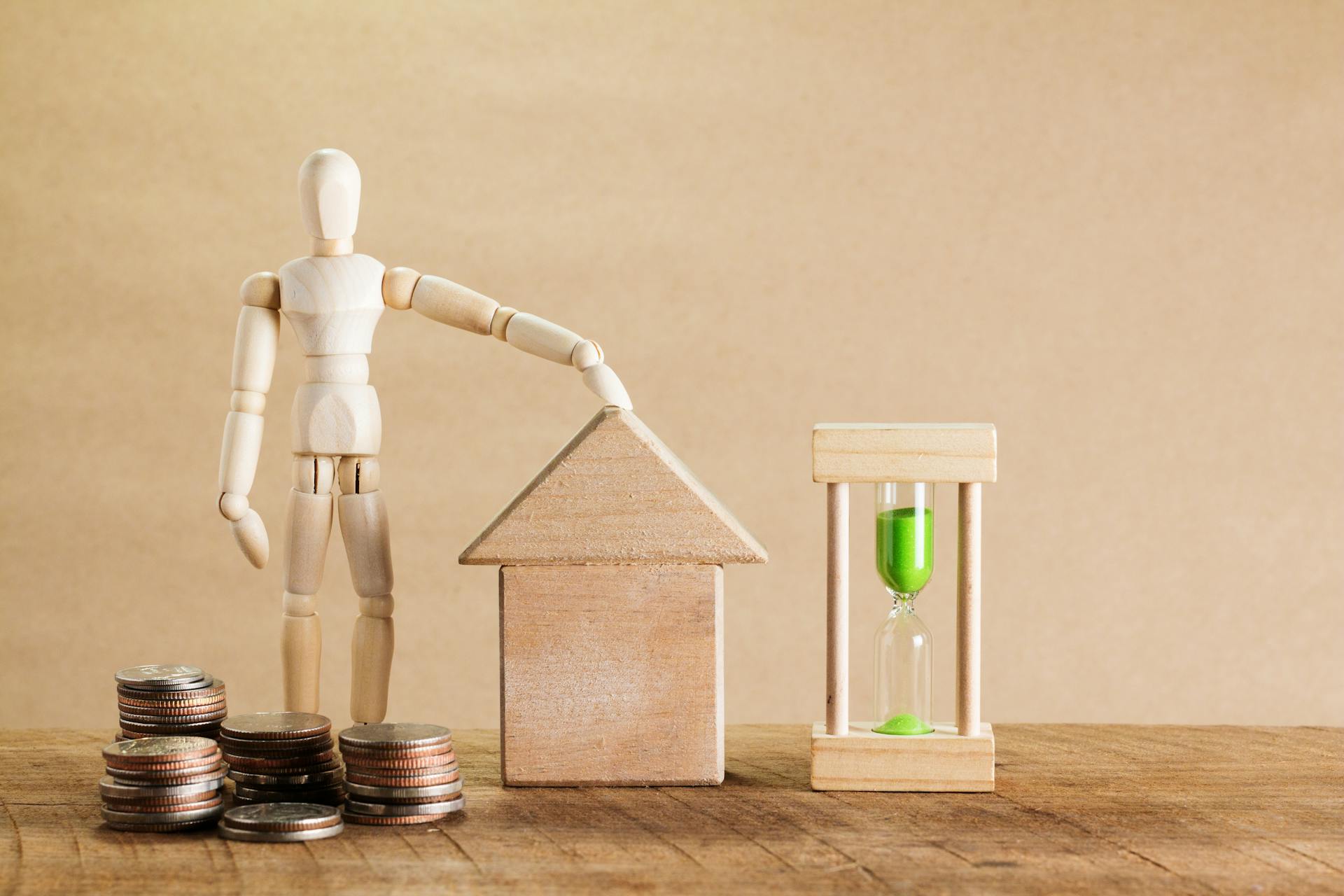
Permanent buydowns can last for the entire loan term, providing long-term savings.
With a permanent mortgage rate buydown, you pay a fee known as discount points to lower your interest rate for the life of your loan. Each point is equal to 1% of your loan amount, and this fee is due at closing. For example, if your loan amount is $500,000, then 1 point will cost $5,000.
The breakeven point on permanent buydowns will depend on how much you have contributed and the overall monthly savings. Your loan advisor can give you a breakdown of your specific scenario to ensure that you make the right decision.
If you're planning to stay in your home for 10-plus years, a permanent buydown can save you a lot of money. You can put the money you save toward your home, credit card debt, student loans, or an emergency fund.
On a similar theme: Interest Only Home Mortgage Loans
Comparison and Analysis
To determine if buying down your interest rate makes sense, you need to consider the breakeven point. This is the amount of time it takes to recoup the cost of the discount points required to lower your interest rate.
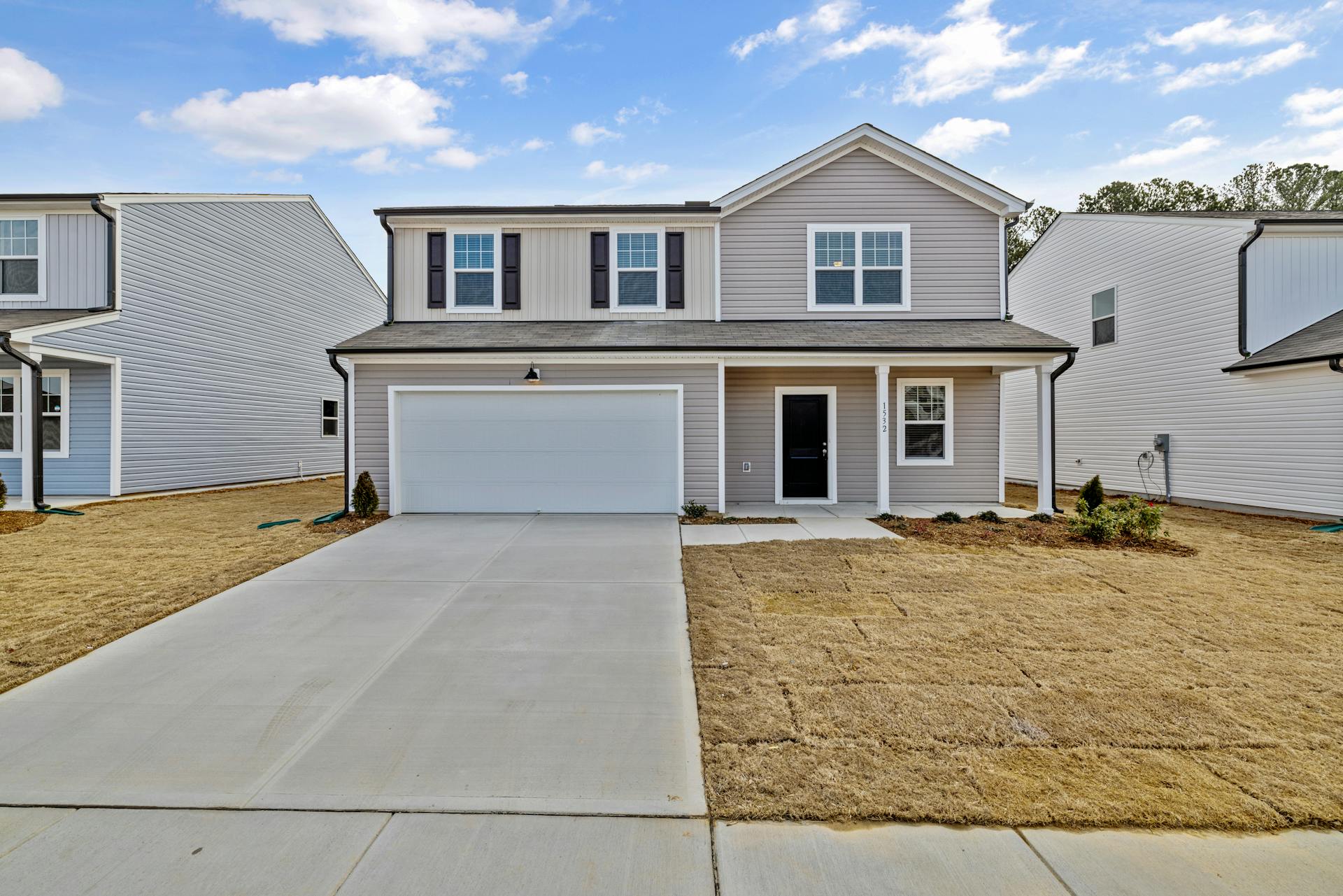
For a $300,000 loan, the difference in principal and interest payment between a 7% and 6% interest rate is significant. This difference can lead to substantial monthly savings.
It will take approximately 15 months to recoup your costs with an annual savings of $2,364. This calculation is based on the cost of points divided by the monthly savings.
For another approach, see: Fannie Mae Investment Property Interest Rates
Differences from ARMs
A key difference between buydowns and ARMs is that the interest rate on a buydown never changes, whereas on an ARM, the interest rate can change periodically for the life of the loan.
The underlying note rate on a buydown remains the same, but the seller or lender pays part of the borrower's interest payments in the first year or two or three. This is a crucial distinction that sets buydowns apart from ARMs.
In some cases, the seller can't offer ARMs as a concession, but this might not be a concern in a seller's market where buyers have little leverage to negotiate.
Differences from Discount Points

Discount points can permanently reduce your interest rate, but the monthly savings are less than you'd think. Paying one discount point, equal to 1% of the loan amount, typically reduces the interest rate by about one-quarter of a percentage point.
The cumulative savings can be substantial over several years, but it usually takes six or seven years of regular payments for the accumulated savings to exceed the upfront cost.
Here's a comparison of the upfront cost and the time it takes to break even with discount points and buydowns:
Buydowns, on the other hand, provide temporary savings that equal the seller's upfront cost in one to three years. This makes them a more attractive option if you plan to sell or refinance your home before the six-year mark.
Comparison of Payments
When comparing mortgage payments, it's essential to consider the breakeven point. This is the amount of time it will take to recoup the cost of discount points required to lower your interest rate.

The breakeven point is calculated by dividing the cost of points by the monthly savings. For example, on a $300,000 loan at 7% vs 6%, it will take approximately 15 months to recoup your costs with an annual savings of $2,364.
To put this into perspective, let's look at a sample payment for a $300,000 mortgage that has a 6% interest rate and a 2-1 buy-down. Here's a breakdown of the total payment for each year:
As you can see, buy-downs can significantly lower your monthly payments for a short period of time. However, the breakeven point is an essential consideration to ensure that you're making the right decision for your financial situation.
Negotiating a Deal
Either side can suggest a buydown, with the seller offering it as a competitive tactic or the buyer requesting it as a seller's concession.
The lender must qualify the borrower at the full interest rate, which requires determining that the borrower can afford to repay the loan after the rate reductions have run out.
For another approach, see: Co Borrower in Housing Loan
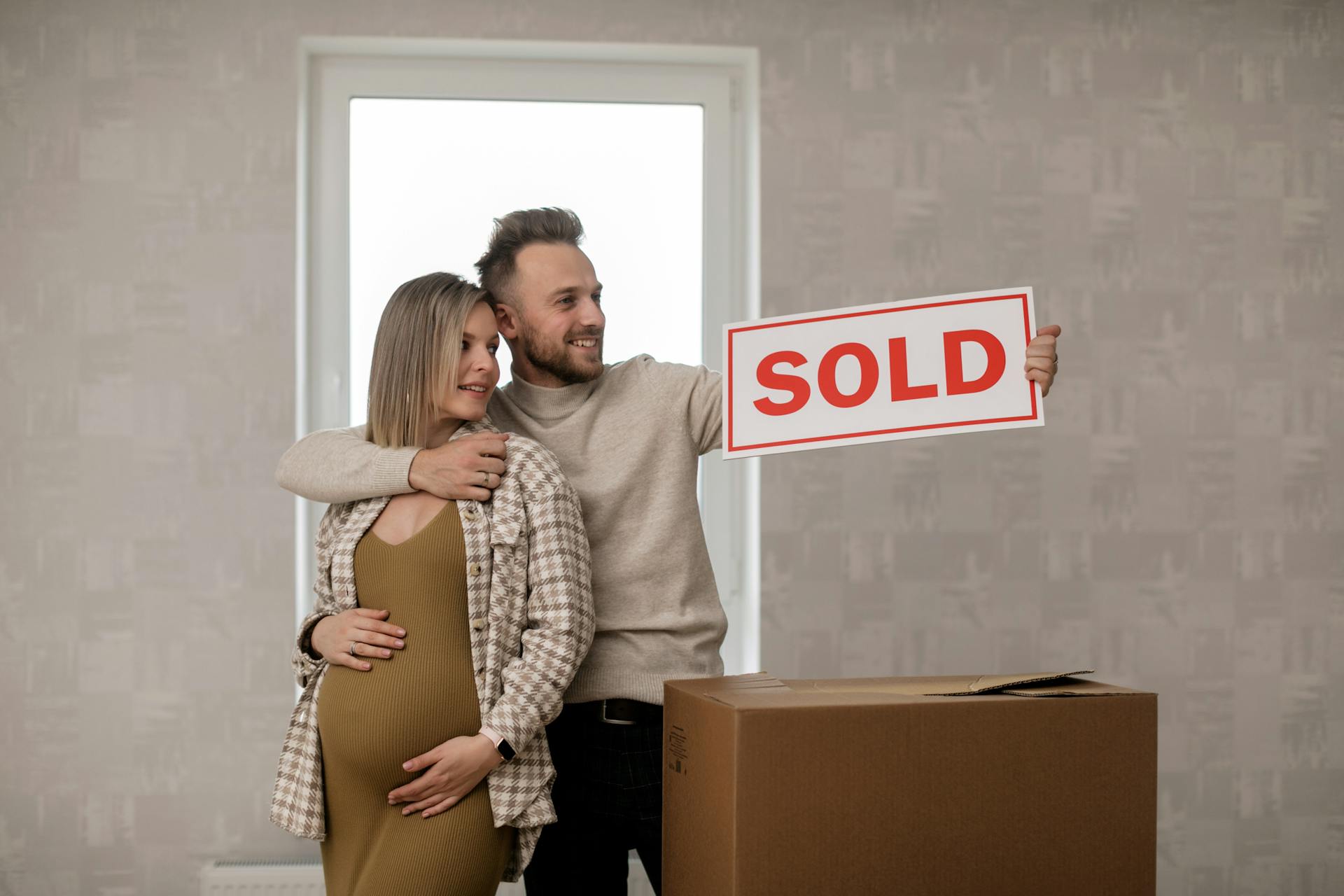
Government-sponsored mortgage companies Fannie Mae and Freddie Mac impose limits on seller concessions, including temporary buydowns, which vary depending on down payment size.
Temporary buydowns are restricted to a maximum of three years, and to soften payment shock, the effective interest rate can only increase by one percentage point each year.
Related reading: Temporary Buydown Mortgage
Frequently Asked Questions
How much does it cost to buydown points?
Buying down points costs 1% of the mortgage amount per point, with one point on a $400,000 mortgage costing $4,000. This prepaid interest can lower your monthly mortgage payments.
Sources
- https://www.nerdwallet.com/article/mortgages/the-property-line-october-2022
- https://mortgagemark.com/mortgage-resource-library/rate-buydown/
- https://www.freedommortgage.com/learning-center/articles/mortgage-buydowns
- https://www.apmortgage.com/blog/interest-rate-hacks-to-reduce-your-monthly-payments
- https://www.directmortgageloans.com/mortgage/buying-down-your-mortgage-rate/
Featured Images: pexels.com

